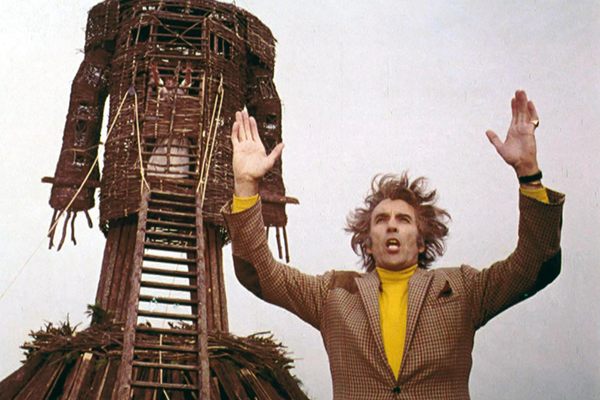Disruptive, World-Changing And Incredibly Mundane: The Story Behind 8 Film Firsts
Ten years ago today, the very first video ever was uploaded to YouTube, “Me at the Zoo,” by the site’s cofounder, Jawed Karim. It’s a fantastically interesting piece of history despite the fact that the video itself is, frankly, kind of terrible; poorly shot, boring, with Karim standing in front of an elephant pit and explaining that elephants “have really, really, really long, um, trunks.” It got us thinking about the first examples of the major points in the history of film, and how mundane—and fascinating—so many of them are.
The First Motion Picture
This is a trickier question than you’d think; for an invention as basic as “moving pictures,” there were a whole mess of competing nascent technologies in the late 19th century. So your definition of the “first” depends less on dates and more on what you define as an actual motion picture. One of the frontrunners would be the zoopraxiscope, invented by Eadweard (!) Muybridge in 1879. The zoopraxiscope is a device that rotates images painted on the edges of a circular piece of glass rapidly, to create the illusion of movement. It’s kind of like a flipbook, creating an image that looks like a GIF.
A later invention from Thomas Edison’s lab, the kinetoscope was perhaps more similar to today’s motion picture cameras, replacing the zoopraxiscope’s piece of glass with a strip of perforated film. The first film for the kinetoscope was called Monkeyshines, No. 1. It depicts an employee of Edison’s lab kind of flailing around for a few seconds, and because of the way the kinetoscope worked, you had to stare into a pinhole to see it. Movies have gotten better since then.
The First Color Film
Again, sort of unclear. The very early devices like the zoopraxiscope and kinetoscope could certainly display color; they weren’t projected, so all you had to do was draw the individual slides in color and, well, you’d see color. But photographs didn’t display color, so film had to wait for photography to catch up before implementing color in film. Certainly one of the earliest would be Le Voyage dans la Lune, a silent film French illusionist and filmmaker Georges Méliès.
Le Voyage dans la Lune, which appeared in 1902, was actually hand-colored, like with paint. Pretty amazing! The story depicts some French people being shot to the moon with a cannon and fighting with moon-men before returning to Earth.
The First Porno
As with any transformative new technology, one of the first applications of the wide-eyed new world of film was…porn. The very first pornographic film is a debatable prize, but we’ll go with Fatima’s Coochee-Coochee Dance, a short film from 1896 depicting a belly dancer.
There’s no nudity, but because it was, probably, the very first censored film, we can assume that at least somebody considered it pornographic.
The First Talkie
Movies had accompanying sound for just about as long as they’ve existed; both the zoopraxiscope and the kinetoscope were sometimes displayed with sound alongside. But when we’re talking about real talkies, a full-on movie in a movie theater with sound, we’re talking about The Jazz Singer, a huge, smash hit feature from 1927. There are barely a few minutes of spoken dialogue in the whole movie, but the first spoken words are pretty killer: Al Jolson addresses the audience, saying, “Wait a minute, wait a minute, you ain’t heard nothin’ yet.”
The First TV Broadcast
Television emerged well after talkies and color movies, and the difficulty with TV wasn’t so much the technical effort required to display the picture and sound as it was syncing all that up with a radio-like transmission. The very first scheduled TV broadcast–meaning, not a demonstration, but a legitimate broadcast, was on April 30th, 1939. It showed President Franklin D. Roosevelt’s inaugural address at the World’s Fair, in New York, to, well, a few dozen people who could actually tune in. The quality isn’t as bad as expected!
The First Live-Streamed Band
Livestreams today are as popular as ever; tech events, music festivals, presidential addresses, and plenty of other subjects are filmed and broadcasted over the internet simultaneously. But in 1993, this was a crazy feat. The very first band to ever be livestreamed over the internet is a Palo Alto garage band called Severe Tire Damage, which happened to be playing a gig at Xerox headquarters on June 24th. Xerox at the time was working on a system called Mbone (“multicast backbone”) for showing live events over the internet, and figured, hey, why not try it out by filming this band? You can see an interview with Severe Tire Damage here.
The First Animated GIF
The Graphics Interchange Format (GIF) was an early image file format, a competitor to Portable Network Graphics (PNG) and Joint Photographic Experts Group (JPG). The Daily Dot interviewed the reclusive creator of the format, finding out that the very first GIF was, the creator thinks, a simple image of a plane. But the format’s strength, as we know now, is that every web browser, straight back to Netscape, can display GIFs with multiple frames–animations, in other words. One of, if not the first, animated GIFs is a kind of spooky white window created by web artist Olia Lialina in 1997.
But, there was something that predated the GIF by about 155 years that has become known as a spiritual predecessor. This is the phenakistocope, an invention from a Belgian physicist named Joseph Plateau. In essence, he set items in motion using spinning disc attached to a handle, and with that motion, achieved the illusion of moving pictures.

The GIF of a pre-GIF GIF. (Photo: Courtesy of Richard Balzer collection.)
The First 3-D Film
Three-dimensonional film might seem like a fad now (especially since there’s 4-D), but it’s a fad that’s been in movie theaters for longer than sound. The very first 3-D film to be screened before an audience was called The Power of Love, which was shown once in 3D, in 1922. Weirdly, 3-D film has not really developed very much at all since then; the setup was, essentially, the same as it is now, using the red-and-green glasses we’re all familiar with. The film actually had two endings, which is kind of cool: you looked through either the red side or the green side to see a happy or a sad ending. The movie has, unfortunately, been lost for years.








Follow us on Twitter to get the latest on the world's hidden wonders.
Like us on Facebook to get the latest on the world's hidden wonders.
Follow us on Twitter Like us on Facebook